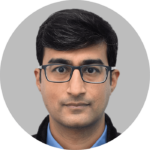About COMPASS
The 2023 COMPASS Theme is Megatrends in Test and Measurement
FormFactor’s COMPASS test and measurement community event brings together FormFactor customers from around the
world to discuss the products and technologies shaping our future. Industry leaders and speakers from corporations,
leading-edge research institutions and FormFactor share test insights on a wide variety of emerging applications
including 5G, trends in advanced packages, next generation memories and other devices, ultra-low noise testing,
cryogenic probing and millimeter-wave measurement and calibration.
Two Ways to Participate in COMPASS 2023!
Virtual - Enjoy COMPASS wherever you are.
A link will be provided for you to join from your device.
Watch Party - Join us at one of our watch party locations throughout the world.
Hear COMPASS presentations and network with attendees and technical staff.
All COMPASS events are no charge

Agenda
Welcome & Reception
Mike Slessor, President & CEO - FormFactor Inc.
代表取締役 川又 信尋
Nobuhiro Kawamata, , FormFactor Inc.
Kainoa Kekahuna, Applications Engineering Manager, FormFactor Inc.
Lunch Break
Quantum control chips are required to be operated at cryogenic temperature to realize large-scale quantum computers. This presentation will introduce a design example of cryogenic analog circuit for controlling silicon spin qubits and its measurement results at 4 K temperature. The presentation will also provide cryogenic evaluation results of a multi-chip packaging structure for qubit installation at 100 mK temperature.
神戸大学
大学院 科学技術イノベーション研究科
准教授 博士(工学)
三木 拓司 様
多数の量子ビットを集積した大規模量子コンピュータを実現するためには、量子ビット制御回路の極低温動作が不可欠です。本プレゼンテーションでは、シリコンスピン量子ビットを制御するための極低温アナログ回路の設計事例と4Kでの測定結果を紹介します。また、量子ビットチップを積層するマルチチップ構造の100mKにおける極低温耐性評価についてもご紹介します。
Cryogenic Measurements of Quantum Control Chips for Large-scale Silicon Quantum Computers
Takuji Miki - Associate Professor, Graduate School of Science, Technology and Innovation Department of Science, Technology and Innovation - Kobe University
Quantum control chips are required to be operated at cryogenic temperature to realize large-scale quantum computers. This presentation will introduce a design example of cryogenic analog circuit for controlling silicon spin qubits and its measurement results at 4 K temperature. The presentation will also provide cryogenic evaluation results of a multi-chip packaging structure for qubit installation at 100 mK temperature.
COFFEE BREAK & EXHIBITION
東京工業大学
科学技術創生研究院 未来産業技術研究所
特任教授 博士(工学)
栗田 洋一郎 様
随時更新予定
Latest Trends in Chiplet Integration Technology
Kurita Yoichiro - Specially Appointed Professor, Laboratory for Future Interdisciplinary Reserch of Science and Technology (FIRST), Institute of Innovative Reserach - Tokyo Institute of Technology
Abstract Not Available
フォームファクター株式会社
シニアディレクター
佐伯 多加夫
半導体業界がポスト・ムーアの法則の時代に進む中、アドバンスト・パッケージングは、コストの削減と同時にパフォーマンス、コンピューティング能力、周波数帯域幅の向上を必要とする次世代デバイスを実現するテクノロジーとして注目されています。 2.5D および 3D IC パッケージング技術は、ますます多くのアプリケーションに利用されています。 こうした性能要件の高まりにより、実行可能なコストでデバイスの性能と歩留まりを確保するために、新たなテストの課題が増え続けています。 これらの要件をサポートするために、テスト戦略とソリューションは進化しています。 本プレゼンテーションでは、先進的なパッケージング オプション、特に 2D および 3D IC テクノロジーの現在の傾向を、プローブ カードの観点からのテスト要件と、現在および次世代のデバイス テストに適合するプローブ カード ソリューションとともにレビューします。
Emerging Trends, Challenges and Solutions for Probing Next Generation Advanced Packaging Devices
Saeki Takao - Sr Director, Manufacturing Engineering - FormFactor Inc.
As the semiconductor industry continues into the post Moore’s Law era, Advanced Packaging continues to emerge as an enabling technology for next generation devices that require increased performance, computing power and bandwidth all while driving lower costs. 2.5D and 3D IC packaging technology is being utilized for ever increasing applications. These increased performance requirements are driving new and ever-increasing test challenges in order to insure device performance and yield with commercially viable costs. Test strategies and solutions are evolving in order to support these requirements. This presentation will review the current trends in advance packaging options, particularly 2D and 3D IC technology along with the test requirements from a probe card perspective and probe card solutions to meet the current and next generation device testing.
COFFEE BREAK & EXHIBITION
日本テキサスインスツルメンツ合同会社
美浦工場
安藤 剛樹 様
Parametric Test - Outline for Parametric Test-
Takeki Andoh - Parametric Test Engineer, Texas Instruments Japan Limited
Provides an overview of parametric testing. Parametric testing consists of all the elements and wiring of an integrated circuit as a single unit.
It is a process to determine whether each element is completed according to the design by measuring the characteristics of each element. Because test elements are formed through a variety of processes, Also this is a very important test process that supports manufacturing equipment quality in each process.
In this presentation, we will deepen our understanding of what parametric testing should be like.
Jerry Broz, Sr. VP of Business Development & Strategic Marketing, Delphon Industries, LLC.
すべての電気テストは、高度なプローブ カードを使用してデバイス上で物理的な「タッチダウン」によって実行されます。
ウェハテストレベルでの要求に対し、テストセルツール/革新的なプローブカード/新材料の開発が必須です。
テストの複雑さが増す中で、高度なプローブ洗浄戦略は、歩留まりを最大化するための基礎となります。
本プレゼンテーションでは、プローブ カードのクリーニングの プロセスとそのイノベーション、コラボレーション、パートナーシップ、および学際的な問題解決アプローチを必要とするさまざまな技術的 (および商業的) 課題に焦点を当てます。
Address Data Integrity Challenges During Expanded Wafer Test
Event closure
End of event reception
Agenda is subject to change
- Applies to on-site "watch party" participants

Mike Slessor
President & CEO

Brandon Boiko
Sr. Applications Engineer

David Cooke
Product Marketing Manager

Pratik Ghate
Principal RF Engineer

Jack De Grave
Director, Business Development

Hadi Najar
Sr Principal Engineer Mechanical Design

Simon Reissmann
Sr. Applications Engineer

Pranav Shrivastava
Principal Applications Engineer

Dr. Choon Beng Sia
Test Technologist
Questions or need help?



















